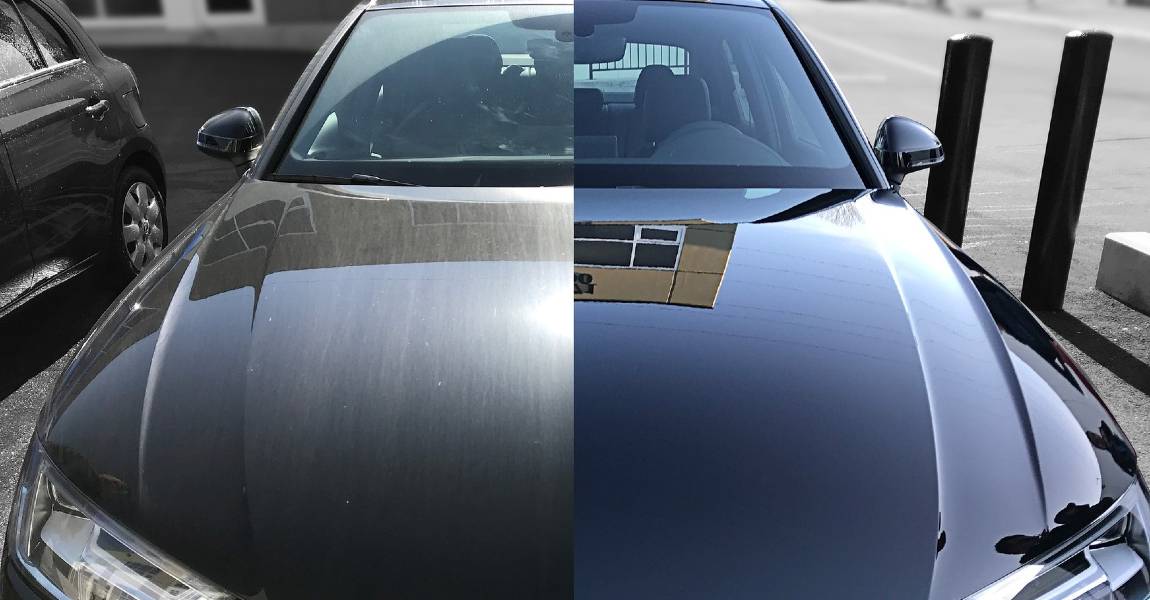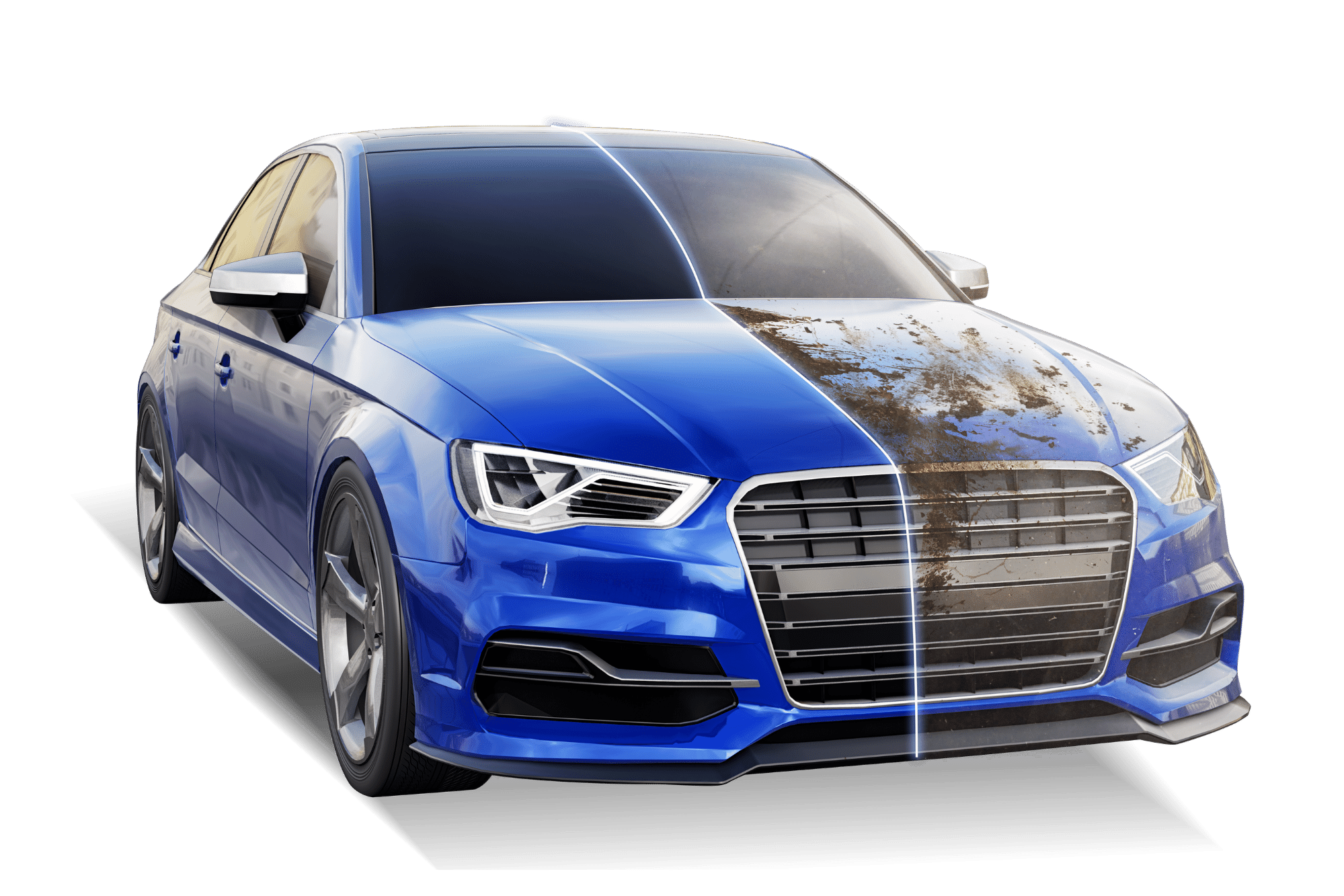Find specialized ceramic coating Sarasota services for maximum protection.
Find specialized ceramic coating Sarasota services for maximum protection.
Blog Article
A Comprehensive Guide to the Kinds Of Ceramic Covering on the Market
Ceramic coverings have become a critical solution throughout numerous sectors as a result of their one-of-a-kind homes and applications. From silica-based solutions recognized for their robustness to hybrid options that merge several advantages, the selections offered can be frustrating. Recognizing the nuances of each type, including their specific benefits and ideal use situations, is essential for making educated choices. As we discover the unique characteristics and applications of these finishes, the effects for performance and long life come to be increasingly obvious, increasing inquiries about which kind might finest fit your needs.
Comprehending Ceramic Coatings
Ceramic finishes are sophisticated protective solutions that have actually acquired popularity in various markets, specifically in vehicle and aerospace applications. These coatings are composed of a liquid polymer that, when healed, develops a sturdy, hydrophobic layer on the surface area of the substrate. This layer offers boosted resistance to ecological contaminants, UV radiation, and chemical exposure, consequently prolonging the life and aesthetic charm of the underlying product.
The fundamental part of ceramic finishings is silica, which adds to their solidity and resilience. The application procedure generally entails surface area prep work, application of the layer, and healing, which can be accomplished through warmth or UV light. Once treated, ceramic layers exhibit exceptional bonding buildings, allowing them to adhere strongly to a range of surface areas, consisting of metals, plastics, and glass.
Along with their protective features, ceramic coatings additionally supply convenience of upkeep. Their hydrophobic nature lowers the adherence of dirt and crud, making cleansing simpler and less regular. In general, the fostering of ceramic finishes stands for a considerable development in surface area protection innovation, providing both useful and aesthetic advantages throughout multiple industries.
Sorts Of Ceramic Coatings
Various kinds of ceramic finishes are readily available, each created to satisfy certain performance requirements and applications - Paint Protection Film. The most typical types consist of:
Silica-based Coatings: These finishes mainly contain silicon dioxide and are understood for their sturdiness and chemical resistance. They are commonly utilized in vehicle and commercial applications.
Titanium Dioxide Coatings: Renowned for their photocatalytic homes, titanium dioxide layers are typically applied in environments where self-cleaning and antifungal residential properties are desirable, such as in building materials and vehicle coatings.
Zirconia Coatings: Characterized by their high-temperature security and thermal resistance, zirconia finishes are made use of in applications such as wind turbine engines and high-performance automobile components.
Alumina Coatings: Displaying excellent hardness and thermal stability, alumina coverings are often used in wear-resistant applications, consisting of reducing tools and commercial equipment. - Car Detailing
Crossbreed Coatings: Combining the homes of numerous products, hybrid finishes use boosted performance qualities, making them suitable for special and demanding applications.
Each sort of ceramic finish serves distinctive objectives, permitting customers to select the most appropriate option based on specific ecological conditions and efficiency requirements.
Advantages of Ceramic Coatings
Coatings play a vital role in enhancing the efficiency and durability of surface areas throughout numerous sectors. Ceramic coverings, specifically, offer numerous benefits that make them significantly prominent amongst producers and consumers alike. Among the primary benefits is their remarkable toughness. These finishes are immune our website to scratches, chemicals, and UV rays, making sure that the underlying surface remains secured gradually.
In enhancement to toughness, ceramic coverings provide excellent hydrophobic residential properties, permitting simple cleansing and upkeep. This water-repellent nature lessens the adherence of dirt, crud, and other contaminants, which can extend the aesthetic appeal and functionality of the surface. Ceramic finishes can substantially improve thermal resistance, making them suitable for applications that withstand high temperature levels.

Application Process
When applying ceramic coverings, a meticulous strategy is crucial to achieve optimum outcomes. A tidy surface makes sure appropriate adhesion of the layer.
Once the surface area is prepped, the following action is to apply the ceramic coating. This can be done making use of an applicator pad or a microfiber cloth, making certain also protection. It is vital to work in tiny areas to preserve control and prevent premature curing. The covering should be applied in slim layers, as thicker applications can cause irregular coatings.
After application, the coating calls for a particular curing time, usually varying from a few hours to a complete day, depending on the product. During this moment, it is essential to stay clear of exposure to wetness or contaminants. Lastly, a mild buffing might be try this out essential after treating to improve look at this now the gloss and eliminate any high spots. Complying with these steps carefully will optimize the effectiveness and durability of the ceramic coating, providing a resilient safety layer for the surface.
Upkeep and Long Life
To make sure the longevity and effectiveness of a ceramic covering, normal maintenance is crucial. Ceramic finishings, understood for their durability and protective top qualities, call for particular treatment regimens to maximize their lifespan and efficiency. The initial step in upkeep includes routine cleaning with pH-neutral soap, avoiding severe chemicals that can deteriorate the covering. It is suggested to clean the car regularly, preferably every 2 weeks, to stop the build-up of pollutants that can endanger the covering's honesty.
Along with normal cleaning, routine inspections are critical. Seek indications of wear or damage, such as hydrophobic properties diminishing or surface imperfections. If needed, a light polish might be applied to rejuvenate the covering without removing it away.
Additionally, the application of a booster spray can boost the finishing's hydrophobic impacts and restore its gloss. This is especially useful for coatings that have remained in use for a prolonged period. Eventually, by adhering to these upkeep methods, one can significantly extend the life of a ceramic coating, ensuring that it proceeds to provide optimal security versus ecological factors and maintain the aesthetic charm of the automobile.
Conclusion

Report this page